Our most tricked out kayaks ever
From the Winter 2010 issue of Wavelength Magazine. Read the entire magazine online.
By Wavelength Magazine
One of the great things about kayaking is the inherent simplicity. All you really need to get started is a kayak, a paddle and the basic safety gear.
But like all hobbies, we can complicate things as much as we want. And nothing has the potential to complicate life as much as gear. It can improve our kayaking comfort, efficiency and convenience. But it can come at the cost of forsaking the simplicity that helps define kayaking.
But this article isn’t about simplicity, so minimalists, put your basic nature aside as we explore the world of kayak clutter. Just as car lovers can deck out hotrods, so can we kayakers deck out our kayaks.
How far can we go? Well, our goal here was to create the ultimate tricked-out kayak. And in the end we actually needed two kayaks to accommodate all the items.
So is our life better now? Sometimes. But not always. Everything has an upside and downside, so in our brief appraisal of the items that make up our tricked out kayak, we take a look at our impression of the pros and cons of each item.
About our tricked out kayaks
No sooner did we announce this project than kayak manufacturers offered boats for the project. Imagine having to turn down a kayak to test! We ended up picking a Seaward Passat as a large (22’) double with the necessary deck space to accommodate the many items. It has a well-earned reputation as a heavy-duty and fast touring/expedition double, most notably being a perpetual winner of the Yukon 1000 race.
The second kayak for this exercise is the Delta 17, which we’re finding to be a good, light, easy-to-paddle day-use or weekend touring kayak made from forgiving thermoform. We picked it because it’s part of the Wavelength roster, meaning we could poke holes to accommodate gear without restriction – a sometimes necessary evil if you really want to trick out a kayak.
How we selected the items
We didn’t. Instead we put out a cattle-call email to various gear manufacturers to take part, at no cost to them to participate, and this is the result. We tried not to exclude anyone, but a few items offered to us fell off the rails mainly due to deadline restrictions. We got swamped!
Because of the complexity, the contributed kayak sails didn’t get a complete workout. Instead, we’re going to outline the four sails we were offered separately in a later issue. Also, we fully intend to improve our tricked out kayak over time, so if items are missing, we’ll fill in the gaps later. To nominate items for inclusion in a future “tricked out kayak beyond all belief,” email kayak@wavelengthmagazine.com
For the cockpit

Interior mounted cockpit bags
North Water
These simple gear bags can increase storage space inside your cockpit. North Water offered two options for our tricked out kayak: the underdeck and interior mount styles, with the latter best positioned along the cockpit side next to the seat.
Advantages: Potential great use of empty space, plus quick release tabs to remove the bags from the anchors. Quick, easy access.
Disadvantages: Be sure you have the necessary cockpit space, for both comfort and safety. The bags aren’t waterproof. The anchor pads must be glued and become a permanent addition to your kayak (though the actual packs can be detached). Requires removing sprayskirt to use.

Seat cushion
Skwoosh
If comfort of the posterior is a priority (and when isn’t it?), then the Skwoosh seat cushion will add necessary padding. This is a staff favorite field tested for many years.
Advantages: It’s a no-brainer installation – just put it down. Comfortable, durable and well constructed. More stable than inflatable seat pads.
Disadvantages: A slight (oh-so-slight) rise in your kayak’s centre of gravity. Could be lost in event of a wet exit.
Versatility: Use it outside your cockpit at your camp on the beach or on rough logs.

Cargo cockpit cover
Beluga Outdoor Works
When kayak camping, a cockpit cover can help keep out dew, rain, bugs and even raccoons. Since the cockpit makes a great place to stash gear, it only makes sense that the cockpit cover provide quick access to the gear. Enter Beluga with this offering that features a zipper to gain inner access, a mesh lining for gear storage and a strap to lift the whole package when needed.
Advantages: Suspends gear to potentially keep it out of the ‘wet’ portion of the cockpit. Adds a layer of versatility to the otherwise static cockpit cover.
Disadvantages: The mesh pocket is large so gear may still fall into the wet portion. Be sure to get right size for your cockpit.

Electric bilge pump
Blue Water Kayak Works
A specialty item, this system utilizes a highly efficient mini pump, battery and a magnetic switch to empty a kayak in about 50 seconds, with an hour’s battery life. That can be doubled by adding a second battery.
Advantages: This allows the safety of emptying the cockpit with hands-free effort, allowing the paddler to concentrate on kayaking rather than bailing – a huge safety benefit. It also enables effort-free emptying of the cockpit during training so you can build skills instead of draining your energy by manually emptying the kayak.
Disadvantages: The installation takes several hours, requires drilling a hole in the kayak and permanently placing the tubing, electrical and battery and pump, which can be nitpicky. Elements can’t be removed (including the battery) when not in use without dismantling the system. The system adds three to four pounds to the weight of the kayak.
Versatility: Blue Water is adding options for a solar panel and an adaptor for other uses such as a USB connection, adding the potential for a great electrical power source during remote long-distance trips, with additional benefit of the safety of an automatic pump.

Cargo half-skirt
Beluga Outdoor Works
The half-skirt covers the front portion of the cockpit, providing some protection from sun and water. A layer of mesh underneath the half-skirt offers unsecured cargo space. A staff favorite for the design.
Advantages: Get the freedom from the confinement of a sprayskirt while covering the area most prone to paddle drips. Protects from sun-burned upper legs. Extra cargo space is a bonus.
Disadvantages: A fair-weather product, it won’t provide the safety features of a full sprayskirt. Cockpit could get waterlogged.

Bilge sponge
Skwoosh
It’s not so much a sponge as it is a highly absorbent, soft material. Smaller than regular sponges, the small size is either a benefit or a drawback. A loop can be used to secure it to your kayak.
Foredeck luxuries

Tech pouch
Advanced Elements
Dry cases are standard these days, especially for anything electronic. New from Advanced Elements is a dry pouch with a twist: an extendable arm keeps the pouch upright at roughly a 45-degree angle. Clip it to existing deck lines for a better viewing angle.
Advantages: Simple clip-on setup, aids visibility of electronic gear, potentially making viewing hands-free.
Disadvantages: The extending arm bends rather than pivots on a hinge. Rigidity suffers and is best if item in the pouch is near the size of the pouch.

Hydration Holster
North Water
This removable holster is designed for quick installation by snapping onto existing deck lines. It keeps a water bottle within easy reach.
Advantages: Protects deck from scratches that will occur if, for instance, your water bottle is secured to your deck under your bungy cords. It also allows one-hand access to your water bottle. Plus the odds of losing your bottle diminish.
Disadvantages: It pretty much precludes a deck bag or other foredeck use as it straps across the width of the foredeck.
Versatility: Can be used around the waist when not paddling.

Yak Armor
Blue Water Kayak Works
This new product is made of a highly scuff-proof plastic designed to protect your kayak’s finish. Cut the Yak Armor to size, then simply lay down flat to apply.
Advantages: Easy to apply and replace. It is virtually indestructible and invisible.
Disadvantages: Bends in the shape of your hull have to be accommodated. Artistry in trimming will help the look.
Turtleback deck bag
North Water
This is an adaptation of the classic deck bag in miniature. It will fit a camera and snacks but not much more.
Advantage: It’s easy to clip into place and contains its own flotation. It is small enough that it is highly unlikely to impede your paddling technique or obstruct views of your compass, for instance.
Disadvantages: Difficult to use with other items like the Tech Pouch.

Sea Anchor
Sea-Lect Designs
This will be of most interest to the kayak fishermen among us, though other kayakers might find a suitable use. It is a heavy cast iron construction that is every bit a traditional anchor, with a handy fold-up storage feature.
Advantages: A truly well-made product that is high durable and likely to last a lifetime of use.
Disadvantages: Users should know the risk of entanglement, and place it only in a manner where a cutaway is possible should the anchor become caught.
Versatility: Can be used to club bears.
Paddle Leash
Natural West Coast Adventure Gear
Simple and efficient, it will link your paddle to your kayak, which is desirable should potentially all three of you (your kayak, your paddle and you) otherwise part ways. A tried and true design.
Versatility: The paddle leash is underrated as a secure way to store other items. For instance, we use it to secure the stand for the waterproof housing on our video camera. Should the stand fail, the leash won’t.
Paddle care

Paddle cover
Natural West Coast Adventure Gear
A traditional paddle cover option, it covers both the blade and the shaft and connects the two ends with an adjustable strap. By protecting the paddle, when used as your spare paddle strapped to your deck it can project your hull and your paddle from scratches.

Stick Holster
Blue Water Kayak Works
This simple pair of connected plastic tubes fastens to the bungy cord on the bow of your kayak. By sliding the ends of the shaft of your spare paddle you gain quick access to your spare paddles.
Advantages: Bow storage of your spare paddle with quick access – perfect for paddlers with paddles for different conditions.
Disadvantages: Unlike North Water’s Paddle Britches, the Stick Holster isn’t easily removed when not in use. Some may not like the look of the tubes when not in use.
Safety

Four-Play
North Water
This versatile paddle float unfolds to fill a number of other possible uses. One is a beaching pad to protect your kayak’s hull when landing on rocks or barnacles. It can protect your car in the same way when loading your kayak into a cradle. It is also billed for use as a sleeping pad and chair.
Advantages: It combines multiple uses in one product that is otherwise a static and rarely used item (in comparison to a traditional foam paddle float). Useful as a pad or cushion in camp.
Disadvantages: The padding is too firm for use as a single sleeping pad. Consider it extra padding under your tent instead. The seat isn’t firm for sitting upright.
Versatility: You could dream up any other number of uses. For instance, use it as a mat for car repairs when you break down on the way to your launch site.

Tow lines
Natural West Coast Adventure Gear and North Water
Two options were rigged to our tricked-out kayaks. NWCAG offers a basic belt-deployed tow rope that is nicely compact. North Water offered its Sea Tec Tow Line, which deploys around the cockpit combing to transfer the stress of towing from the kayaker to the kayak. A quick-release tab ensures an easy jettison, if the need arises.

Outrigger rescue device
Solo Rescue Assist
While paddle floats assist through buoyancy, this outrigger provides stability for wet re-entries through a cantilever and a water-filled counterbalance.
Advantages: The weight of the water is very effective for providing stability during self-rescues.
Disadvantages: Bulkier to store on a kayak than most paddle floats.
Versatility: Can be augmented by a ladder. Two such outriggers would provide near-perfect stability for a kayak. Great potential for overnighting during expedition crossings.
Kayak sails
We quickly decided that in terms of tricking out a kayak, a sail went one step further by transforming the use into a whole new skillset. We were offered four types of sails for this project, and present two styles to whet the appetite for this option. We are planning a followup article to examine sails and kayak sailing in more depth.
RapidUp Sail
Advanced Elements
This simple, effective and highly portable design quickly clips to the bow of your kayak.
Advantages: Quick, light and simple, especially as the sail uses carabiners to connect. Can be quickly dropped onto the deck when the need arises.
Disadvantages: The design is downwind only. We found it difficult to refit into the stow bag. Care needs to be taken in the process, as the light frame can snap, rendering the sail useless.

KayakSailor
Kuvia
This rates as a more complex design by far, with greater benefits. The design is rather ingenious, and effectively mimics a sailboat with features adapted for a kayak. We can’t wait to more thoroughly test this!
Advantages: Can be used for upwind sailing. Careful thought to the design essentially transforms the kayak into a full-fledged sailboat complete with outriggers.
Disadvantages: Holes in hull required to mount, plus a sailing skillset is required – or will need to be developed.
Security

Kayak Secure
Beluga Outdoor Gear
Operating akin to the famous Club for securing the steering wheel of cars, this heavy-duty extendable bar extends to clamp across the cockpit of your kayak, then locks into place.
Advantages: While no guarantee by itself that someone won’t steal your kayak, in conjunction with a locking cable it adds an extra measure of security – plus provides a place to tether the cable.
Disadvantages: It’s heavy.
Versatility: Can be used to club bears.

Kong Cable
Lasso Security
This extra-heavy-duty locking cable is designed with two loops on either end. Wrap around the kayak on either side to take up the slack and secure around your car’s kayak rack or a post, then secure in the middle to reconnect two ends. Locks with keys or combination.
Advantages: Sturdy, secure design with lots of latitude for use.
Disadvantages: Weight of the locking portion means care is necessary when looping to avoid scratching your car. A sliding protective cover would help.
Transport

Trayak
Tony’s Trailers
Leave the car at home. The Trayak offers a versatile, portable, lightweight yet strong design. A staff favorite.
Advantages: It is surprisingly efficient for towing the kayak, requiring little additional pedalling effort. Good strong construction. Adaptable design includes possibility of a cargo container. Can be adopted for different lengths of kayaks. Turns on a dime. Plastic tires allow backing the trailer into the water to unload. A carbon-neutral product. Simple tightening fasteners. Quick to assemble. Well designed.
Disadvantages: Hills, dogs and cars and all the usual impediments to cycling.

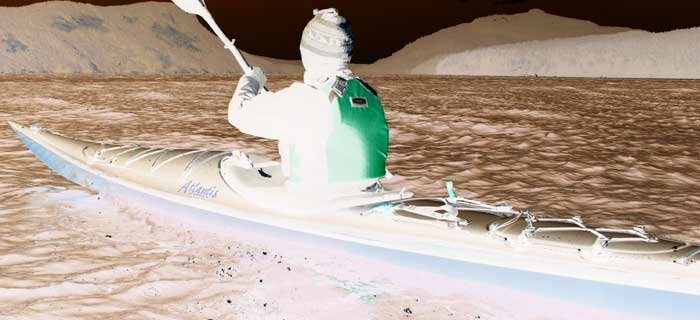
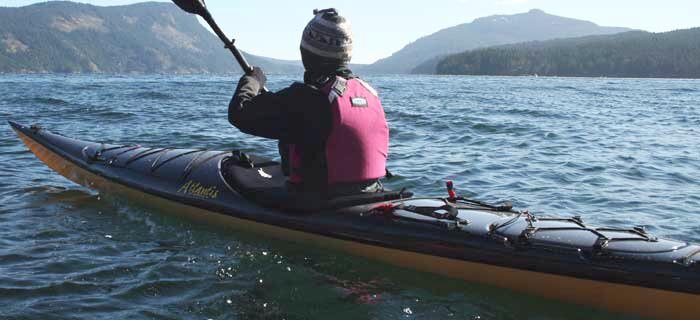
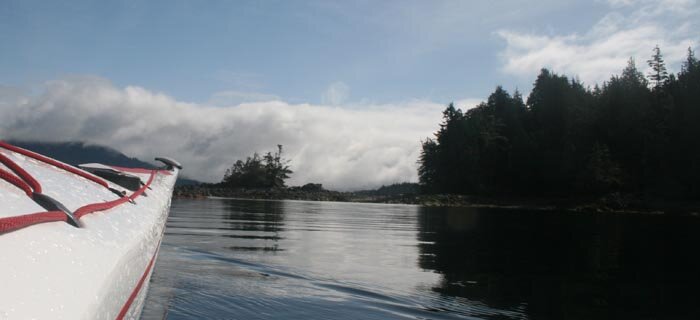

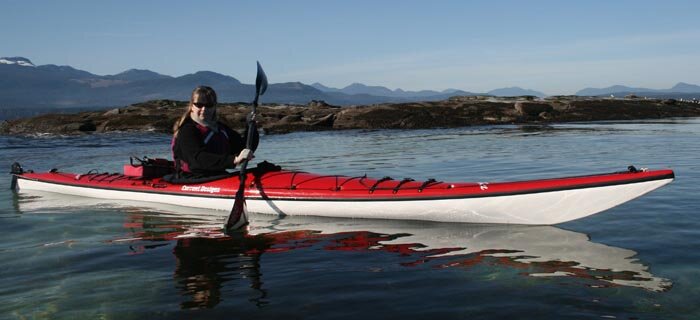

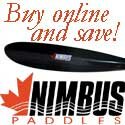















 This site uses valid HTML, CSS and Flash. All content Copyright © 2010 Wild Coast Publishing.
This site uses valid HTML, CSS and Flash. All content Copyright © 2010 Wild Coast Publishing.